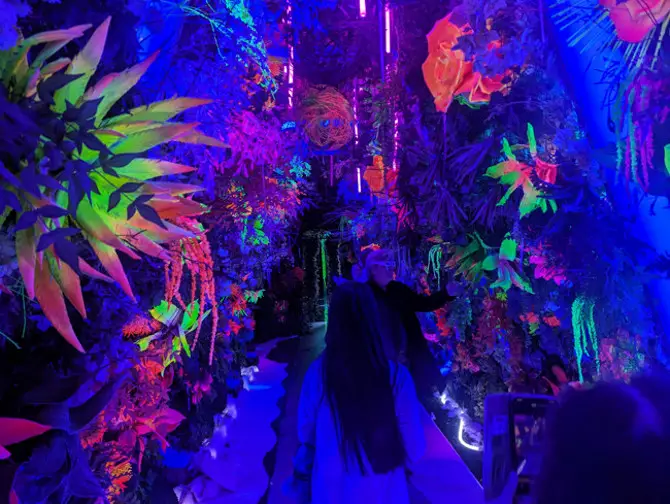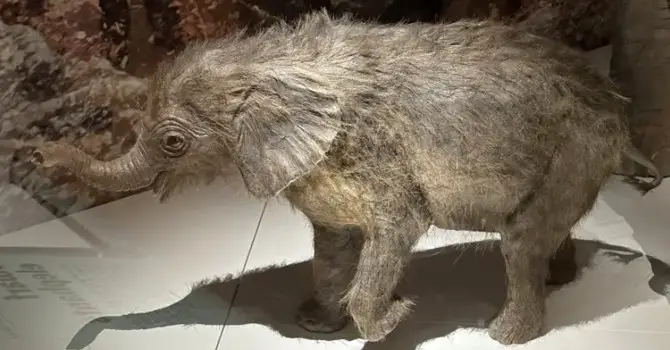The American Museum of Natural History welcomes an exhibit with bite: Crocs: Ancient Predators in a Modern World, providing a fascinating look at the world of archosaurs, a group that includes alligators and crocodiles as well as extinct dinosaurs and modern birds.
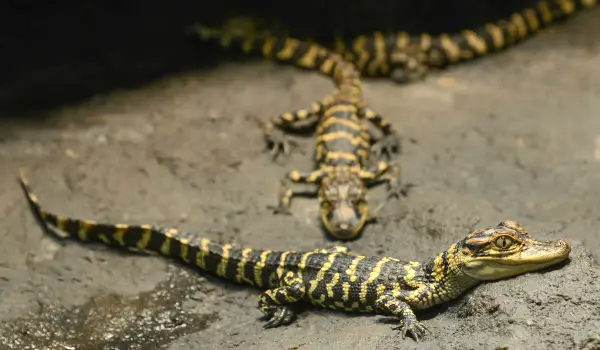
American alligator hatchlings (Alligator mississippiensis) © AMNH/R. Mickens

And while yes, there are fossils and life-sized dioramas (one is of "Gomek," the largest living saltwater crocodile, who was nearly 18 feet long and weighed almost 2,000 lbs!)—real live crocodiles are on display: a pair of Siamese crocodiles, as well as some very active alligator hatchlings, a Western African dwarf crocodile, and a Central African slender snouted crocodile. The exhibit is also filled with interactive, informative stations where kids can learn "Croc Speak," how to distinguish a croc from an alligator, and more.
Crocodilians—the order includes crocodiles, alligators, caimans, and gharials—have been around for some 200 million years. While many still think of crocodilians as prehistoric, savage creatures, they are actually creatures that continue to gracefully adapt in the face of climate change and pollution, yielding myriad varieties in size and shape of their species around the world. They have a life expectancy of between 60 and 80 years, reaching reproductive age around eight years old, says Evon Hekkala, Research Associate, Department of Herpetology. Today, researchers are also studying crocs’ blood. “They have an amazing ability to resist infection,” says Hekkala—their blood contains antimicrobial peptides that could be used to enhance human antibiotics.
While crocs may look like overgrown lizards, they actually belong to the group archosaurs, which also includes extinct dinosaurs, pterosaurs, and modern birds. At the exhibit, visitors can touch a display of an ancient marine crocodylomorph Steneosaurus bollensis, which lived until about 130 million years ago in what is now Europe. Also on display is a replica of a skull of one croc that grew to be 19 feet long, living between 13 and 6 million years ago on the east coast of the US. Visitors can also check out AMNH’s exhibit Dinosaurs Among Us, which further explores the connection between dinosaurs and birds.
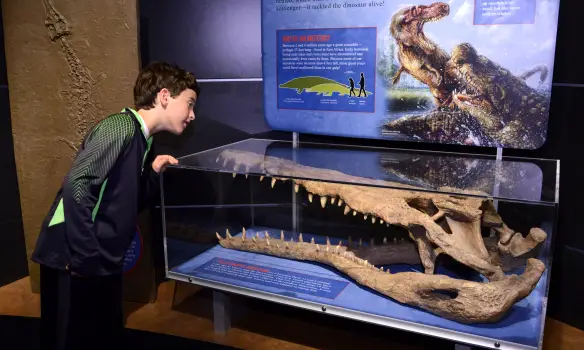
Thecachampsa americana skull replica © AMNH/C. Chesek
How can you tell a crocodile from an alligator? Crocodiles generally have long, narrow snouts and show their teeth; alligators have shorter, broader snouts that are stronger and can more easily crunch their prey; their lower teeth are concealed.
Crocs are fierce moms and dads, protecting and defending their nests and young for months after hatching. Unlike other crocs, gharials set up communal nurseries to watch their young, guarded by the females day and night. If there’s trouble, a dominant male comes to their aid.
The exhibit is curated by Dr. Mark Norell, AMNH’s Chair and Macaulay Curator, Division of Paleontology. Alligators were once at the point of extinction, he notes. Thankfully, the fashion craze of alligator- and crocodile-skinned bags and shoes has waned. With a more than 20-year-old hunting ban in place, there has been a healthy increase in the crocodilian population.
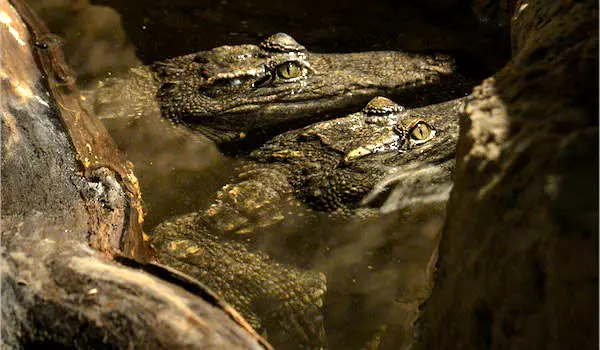
Siamese crocodile (Crocodylus siamensis) © AMNH/R. Mickens
Crocs: Ancient Predators in a Modern World at American Museum of Natural History runs through January, 2017. The museum is open daily from 10am-5:45pm. For more information, visit amnh.org.


